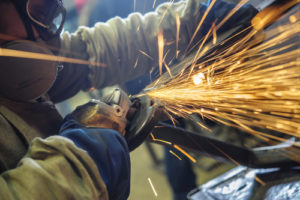
Component Surface Blisters
A common defect occurred during surface treatment process of zinc die casting is blisters. Certain errors in pre-finishing, electro-deposition, or casting phase may cause the blisters to form on the surface of the zinc component. Such surface treatment defects in die casting resemble bulges on a component’s surface. Their dimension is subject to vary based on the root cause of the formation of the blisters.
Blisters on a casting’s surface may be due to alloy contaminants like percentage cadmium or lead, or due to inter-granular corrosion of the alloys. Casting blisters may also cause due to surface porosity or other defects in casting such as cold laps. In such cases, the blisters on the component surface feel coarse while touching it, and are often shaped round and large.
In order to analyze the reason for the blisters on zinc die-cast parts, foundry engineers cut the defect portions using a blade. By partitioning the blister, the die-cast part will be cut as well. Doing that will help the engineers identify the forming of blisters due to porosity in the casting phase. In order to avoid casting blisters, it is important to lessen the surface porosity like gas inclusions or cold laps.
As mentioned, not all the blisters are due to erroneous casting since errors in pre-finishing stage may also cause it to form. For instance, while prepping a component for electro-deposition, operators pay heed to oxidation’s detection on the surface, corrosive elements, or even contaminants that are superficial.
If the surface of zinc die-cast components is not cleaned to perfection in pre-finishing phase, several round blisters may form following electro-deposition. In order to identify its root cause, operators in pre-finishing cut through the blisters in order to observe the substrate at a microscopic level and even single out the oxidized layer to have caused it. In order to prevent such kinds of difficulty in zinc die casting, it is recommended to avoid the delays in between the casting phase, cleaning phase, and electro-deposition stage, so that the probability of surface oxidation shall be avoided.
On the other hand, blisters due to errors in electro-deposition are identifiable by inappropriate adherence between copper and nickel layers, or chrome and nickel on the surface. The formation of such kinds of defects can be avoided by ensuring the copper layer is thick enough. For that, die casters leave short time lapse between copper plating and nickel plating, and check baths to clear contaminations on a regular basis.
